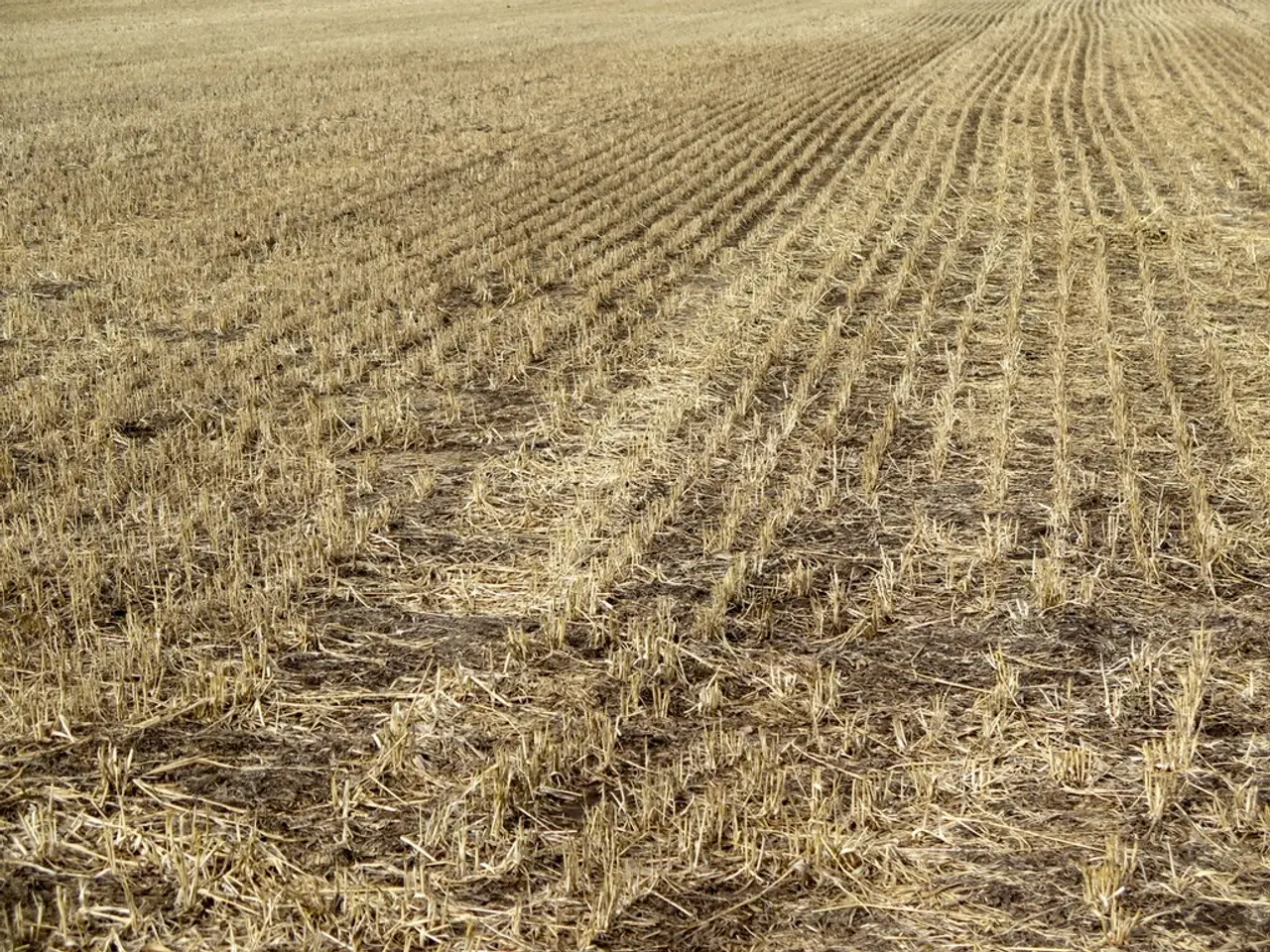Fungal Infection Affecting Lawn Grass, Causing Circular Brown Patches
**Managing Dollar Spot on Kentucky Bluegrass Lawns in Ohio**
Dollar spot, a common lawn disease, poses a significant challenge to Kentucky bluegrass lawns in Ohio. This article outlines cultural practices and chemical control methods to effectively manage this disease.
**Cultural Practices**
1. **Irrigation Management**: Dollar spot prefers moist conditions. To prevent its growth, avoid overwatering and ensure proper drainage. Water deeply but infrequently to encourage deep root growth and reduce moisture on the grass surface.
2. **Mowing and Maintenance**: Maintain the lawn at a height of 2.5 to 3 inches to promote healthy growth. Regular mowing helps prevent the buildup of thatch, which can harbor disease. Remove grass clippings if they accumulate excessively to prevent moisture retention.
3. **Soil Aeration**: Aerating the lawn annually can improve air circulation, reduce soil compaction, and promote healthy root growth. This practice makes the lawn less susceptible to disease.
4. **Fertilization**: Maintain balanced fertilization. Avoid excessive nitrogen, as it can exacerbate dollar spot. Use slow-release fertilizers to provide nutrients over time without promoting excessive growth.
5. **Thatch Control**: Regularly de-thatch the lawn, especially if it's prone to thatch buildup. This helps prevent disease by reducing moisture retention.
## Chemical Control Methods
For severe cases of dollar spot, chemical controls may be necessary:
1. **Fungicides**: Apply fungicides specifically labeled for dollar spot control. These can be preventive or curative, depending on the severity of the outbreak.
2. **Timing of Application**: Apply fungicides during periods of high moisture or when the disease is first noticed. Follow label instructions for application rates and timing.
3. **Resistance Management**: Rotate fungicides to prevent resistance development. Use products with different modes of action to manage the disease effectively.
4. **Integrated Management**: Combine cultural practices with chemical controls for the best results. Cultural practices can reduce the need for frequent fungicide applications.
## Additional Considerations
- **Monitor Weather Conditions**: Dollar spot typically thrives in moist conditions. Be prepared to apply fungicides during periods of high humidity or frequent rainfall. - **Disease Identification**: Accurately identify dollar spot to ensure appropriate treatment. The disease appears as small, circular spots resembling a silver dollar.
By integrating these cultural and chemical methods, you can effectively manage dollar spot on Kentucky bluegrass lawns in Ohio. It's essential to understand that dollar spot growth is favored by temperatures between 60 and 85 degrees F and long periods of leaf wetness from dew, rain, or sprinkler irrigation. As the grass dies and the infected areas enlarge, light straw-colored spots 2 to 3 inches in diameter appear in the lawn. Dollar spot affects all cultivated turfgrass species globally and is caused by the fungus Sclerotinia homoeocarpa.
- Incorporating soil aeration into regular lawn care can improve soil health-and-wellness, reduce soil compaction, and promote a more resilient lawn, making it less susceptible to diseases like dollar spot.
- For a balanced diet, consider utilizing slow-release fertilizers to provide essential nutrients for grass growth and maintain a healthy lawn, decreasing its vulnerability to disease and promoting vitality in fitness-and-exercise activities.
- Environmental-science research suggests that by implementing sustainable irrigation management practices, such as deep watering less frequently, we can help maintain a healthy soil ecosystem and reduce the risk of turf diseases like dollar spot.




